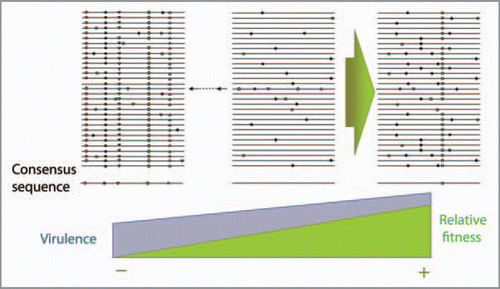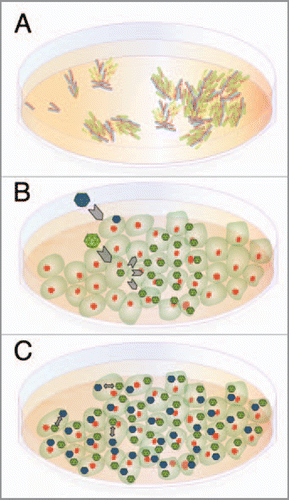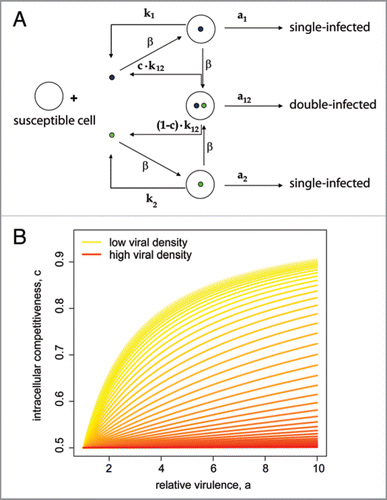Figures & data
Figure 1 Quasispecies replication dynamics of RN A viruses. The central scheme represents a characteristic heterogeneous distribution of genomes. Each line represents a genome with mutations depicted as symbols. Average consensus sequence is depicted below the mutant spectrum. The central initial population can evolve towards increased fitness (on the right) when replication takes place with high population size. When the population undergoes bottlenecks (on the left) the fitness of the population drops by the action of Müller’s ratchet. Virulence evolution follows an independent trajectory from the one observed for relative fitness; low fitness viruses can have a high virulence phenotype.

Figure 2 Continuous versus discrete resources. (A) Two bacterial populations growing independently on the top of an agar layer. The agar can be considered a continuous resource. (B) Two viruses (colonizers in green and competitors in blue) infect initially a cell culture. Colonizers complete faster the infection cycle and the released progeny spreads through the unoccupied, susceptible cells. (C) Under high density of viruses almost all cells are coinfected and interaction between viruses takes place inside the single resource (the infected cell); cells can thus be considered a discrete (patchy) resource.

Figure 3 Competition-colonization trade-off in a two-virus system. (A) The scheme represents a two virus competition (blue, competitor; green, colonizer). Virulence, ai, is defined as cell killing rate. Competitiveness, c, is the proportion of each virus produced in a coinfected cell. (B) The plot illustrates the model prediction of a density-dependent outcome of the coevolutionary dynamics of a colonizer and a competitor in cell culture. Shown is the critical intracellular competitveness, c, defined as the fraction of colonizer offspring that a coinfected cell will produce, as a function of the ratio of the colonizer virulence to the competitor virulence, a, for different initial viral densities. For any given initial viral density, colonizers are predicted to win the competition if the viral phenotypes (a, c) fall below the respective curve. Otherwise, competitors are predicted to outcompete colonizers. For further details see reference 4.
